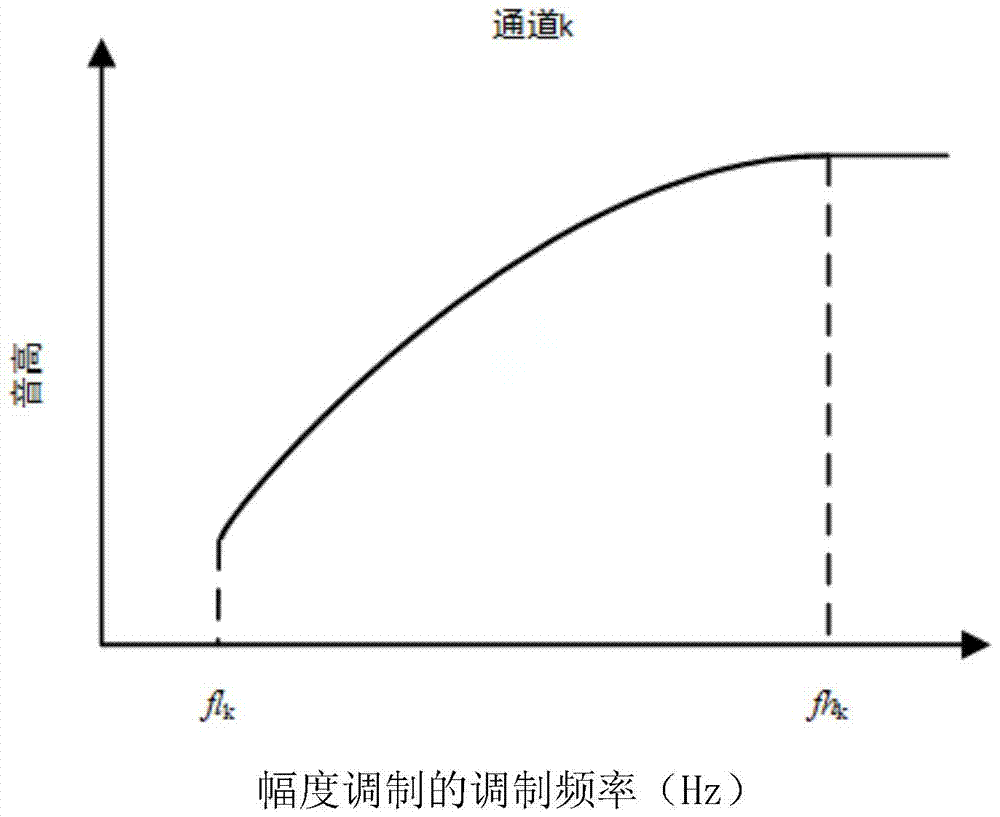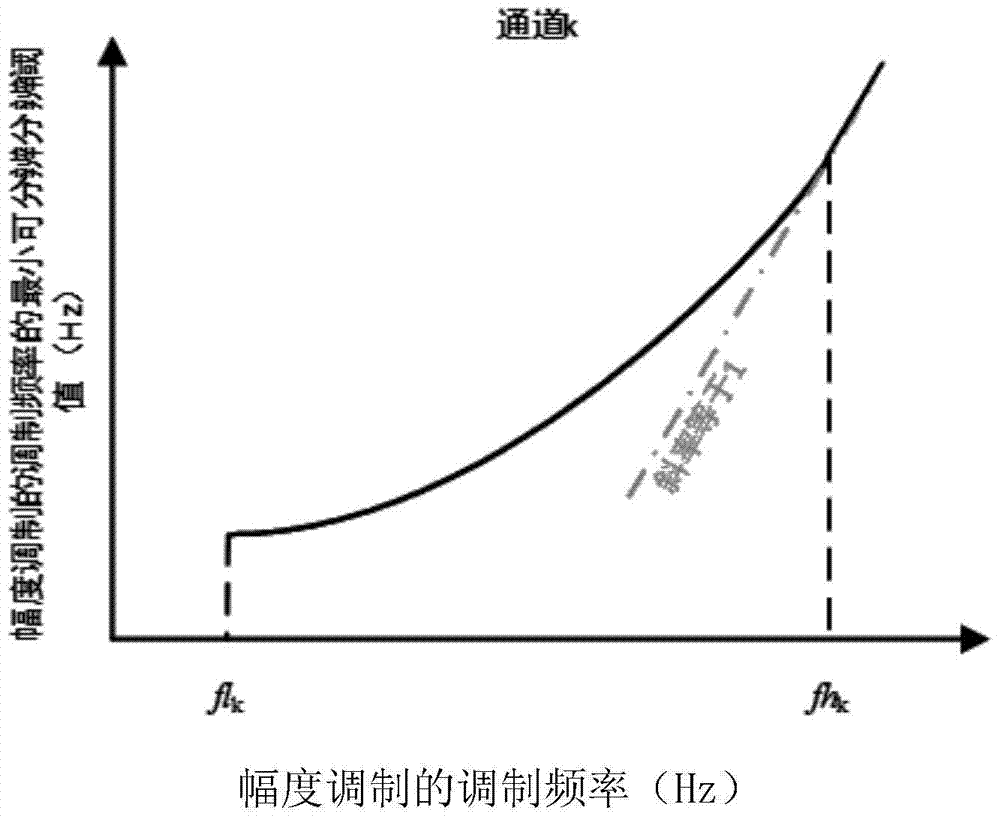A signal processing method and system for an electric auditory prosthesis
A signal processing and electroacoustic technology, applied in the field of medical devices, can solve the problems of expressing electrical pulse signals without continuous frequency information, information movement of carrier frequency, and inability to distinguish, etc.
- Summary
- Abstract
- Description
- Claims
- Application Information
AI Technical Summary
Problems solved by technology
Method used
Image
Examples
Embodiment 1
[0077] Embodiment 1: A processor with 16 electrode channels processes a single Chinese character "下" / xià / , and adopts the signal processing method of the present invention respectively (i.e., the method 1 used in pre-designing the band-pass filter bank and the method used to extract slowly changing information Method 1), the experimental results are as follows Figure 7 As shown in the left electrode diagram, only part of the time period is shown in the diagram; and the time domain envelope method adopted by modern clinical strategies, the experimental results are as follows Figure 7 As shown in the right electrode diagram, only part of the time period is shown in the diagram; in the left diagram, it can be clearly observed that the fluctuation speed of the time domain envelope is slowing down (for example, T2>T1), but this rule is not reflected in the right diagram. This slowing down corresponds to the tone of the character "Xia", which is the fourth tone (Qu tone). At the ...
Embodiment 2
[0079] Embodiment 2: The method of simulated sound is used to carry out a psychoacoustic comparative experiment of pure tone frequency resolution on the present invention, clinical CIS strategies, and normal hearing conditions (normal hearing, NH). The subjects are 3 young people with normal hearing. Under the reference frequency conditions (650, 750, 850, 1950, 2050, 2150Hz), the minimum resolvable frequencies Δf corresponding to the three methods are respectively measured, and the vertical axis in the figure is represented by the Weber fraction (Δf / f). The test results are as follows Figure 8 shown. It can be found that the present invention is superior to the clinical CIS strategy in most cases (the smaller the Weber score, the better the effect), and is equivalent to CIS in a few cases. And the present invention is comparable to, and in some cases superior to, NH. This shows that the present invention can improve the frequency resolution capability.
[0080] The method ...
Embodiment 3
[0081] Embodiment three: on the one hand compare the TLE (Temporal Limits Encoder of the present invention, real-time domain restriction coding) strategy and CIS (Continuous Interleaved Sampling, i.e. the performance of continuous interval sampling) strategy in Mandarin tone recognition, as Figure 9 Shown; On the other hand compare the performance of the speech recognition of the present invention (TLE strategy) and CIS strategy in the noise, as Figure 10 As shown; where u and G are two frequency division methods, u means that 50 to 3250 Hz is evenly divided, and G means that 80 to 8000 Hz is divided by equal basement membrane length according to the Greenwood function. It can be seen from the figure that the present invention (TLE strategy) can provide a lower speech acceptance threshold in noise and a higher tone recognition rate than the CIS strategy. This shows the advantage of the present invention (TLE strategy) in speech perception.
[0082] In summary, the present i...
PUM
 Login to View More
Login to View More Abstract
Description
Claims
Application Information
 Login to View More
Login to View More - R&D
- Intellectual Property
- Life Sciences
- Materials
- Tech Scout
- Unparalleled Data Quality
- Higher Quality Content
- 60% Fewer Hallucinations
Browse by: Latest US Patents, China's latest patents, Technical Efficacy Thesaurus, Application Domain, Technology Topic, Popular Technical Reports.
© 2025 PatSnap. All rights reserved.Legal|Privacy policy|Modern Slavery Act Transparency Statement|Sitemap|About US| Contact US: help@patsnap.com



